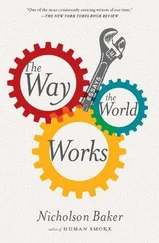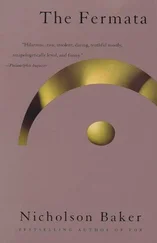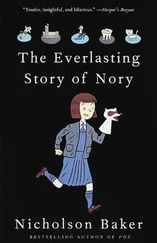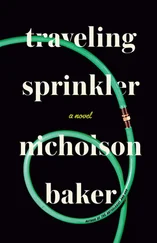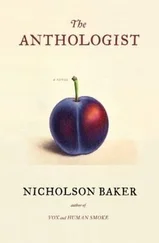Warren Haas knew Patricia Battin’s aptitudes well — in 1974, at Columbia, he had hired her away from SUNY Binghamton’s small library; several years later, he left her in charge of Columbia’s huge library system when he went to Washington to take up foundation work. “She’s sharp as hell,” Haas told me. “She’s a good manager — an extremely good manager — very articulate, and has for a long time been one of these people who look twenty years in the future, understanding that print and digital information are all part of the same game.” In the early seventies, when at Columbia, Haas had gotten the Council on Library Resources to hire some efficiency experts at Booz, Allen and Hamilton 2(a consulting firm that had done mechanization studies for various libraries in the Air Force, the Navy, and the Army) to come up with a plan for reorganizing the Columbia library’s administration and readjusting its position within the university. The result of this consultational scrutiny was that Haas became the first library director who was also vice president for information. “I had the computer center under my wing,” Haas says.
But in Haas’s era, computing and library management, while joined at the top, remained more or less functionally independent of each other. As personal computers began to appear in the early eighties, Patricia Battin (who had already bought a million-dollar mainframe system in her role as an executive at the Research Libraries Group), decided that it was time to bring her subordinate divisions closer together. In her 1984 article “The Electronic Library — a Vision for the Future,” she is at pains to say that “the personal computer 3does not mean an end to books,” but she goes on to describe the requirements of the “wired scholar,” and she calls for “merging the Libraries and the Computer Center to provide an information infra-structure to stimulate the continuing autonomous use of information sources.” In practice, that meant buying more databases and new hardware, fusing library and computer budgets, and spreading around IBM seed money as part of something called Project Aurora—“which is the dawn,” she explained to me. About the partnership with IBM, she now says, with some justice, “This is what the vendors had done from time immemorial. They get their feet in the door by giving you all this free stuff and then you become indebted to them for ever—‘indentured’ I guess is the word.”
Even with IBM’s self-interested help, however, Battin’s vision of the scholarly future would have major start-up costs. And Columbia was not rich at the time; in fact, one of the tough-love things Battin did as university librarian was cut almost a tenth of her workforce. “It was hard because… the whole online automation started, and so forth, and so we were really trying to transform operations as well as reduce expenses,” she told me. Naturally, there was tension—“opposition everywhere” is how she summed it up to me. Some of her staff didn’t understand the new Scholarly Information Center that she and IBM had brought into being: they asked where it was. Battin told them, “There isn’t any center, it’s in your mind.” And some faculty “failed to understand the kinds of unattractive decisions that have to be made.” Libraries are, Battin observed to me, “the lifeblood of scholarship and instruction, and when you start tinkering with somebody’s lifeblood, they’re not going to like it.” In particular, she says, “the scientists were on me all the time because we weren’t moving fast enough, the humanists were on us all the time because we were destroying the book — which we weren’t.”
Columbia had space problems, too. (“Everybody has space problems,” Battin says.) She finally convinced the board to buy a five-million-dollar building on 131st Street in Manhattan to use for book storage (the fact that it was off-limits to patrons caused some fussing from the faculty), but she also tried to get the president and the provost to understand that they must amortize the book budget just as they amortize computers, “because every time you buy a book, you buy a space cost.” (Fremont Rider’s old point.) Battin never quite says that her notion of the library of the future was premised on the elimination of a good part of Columbia’s old book collection — instead she says, in her essay on the electronic library, oblique things such as: “We expect the preservation medium of the future to be optical disk”; and, “The basic shape of our collections 4will change as we develop programs for shared collection management and shared preservation.”
Battin — very tall, square-shoulderedly elegant, with (in the eighties, at least) large rectilinear glasses similar to those Joyce Carol Oates used to wear in pictures — was an enthusiastic early digitarian, but, like Haas before her, she did not spurn traditional microfilm, either. In 1983, she told her preservationist peers that Columbia’s library had four microfilm cameras going full-time; the library depended on “outside funding and cooperative projects for an active assault 5on our large collection of brittle materials.” On her arrival at Columbia, she had been horrified by what she called “yellow snow” in the stacks — the wisps and shards that crack off the margins and flutter down from inside the bindings of wood-pulp book-paper and old newsprint. (An ill-fated technique of commercial rebinding called oversewing, 6which arrived in the twenties and by the mid-1930s had been incorporated into the specifications for library binding — a technique that knits together the back of the milled-off text-block by means of dozens of angled needle-punctures, effectively perforating the inner margins — is a major cause of yellow snow.) Such fragments have been a fact of library life for many decades (“scraps of faded, rusted, brittle paper 7litter the floor and present insistent questions,” said the Bulletin of the New York Public Library in 1929), but Battin, freshly arrived from SUNY Binghamton’s young and relatively small collection, was not prepared for what she found. “It was so shocking,” she told me; in yellow snow she found evidence of a silent post-industrial cataclysm. It led her to propose that “we will not add to our collections 8any material in poor condition, regardless of its intellectual content,” since “it makes no sense to spend an enormous amount of money on materials that are simply going to deteriorate.”
An active assault —that was the sort of aggressive zest Battin brought to her work at the Commission on Preservation and Access. She gave the Commission “full-time energy,” Warren Haas told me, “and a point of view that was exactly right. You just have to talk to Pat to understand Pat. She’s a great animal.” Her organization’s tax-exempt status prohibited her from lobbying on behalf of legislation, in the strict legal sense, but she could and did get the heads of twenty of the largest research libraries in the country to write letters expressing their deep concern over brittle books, and she could and did (as she told me) “work with Mr. Yates’s office giving him the kind of information that he needed as to how severe this problem was.” And she could, of course, write speeches, which she gave across the country and around the world, showing the incendiary Slow Fires as she went.
Some years later, in an awards-acceptance ceremony sponsored by an IT firm, Battin claimed that she owed her success to “affirmative action and the old boy network.” 9But in this she did herself an injustice. Battin owed her success to the missionary intensity of her desire for informational reform, and to her capacity for exaggerative repetition. Her knowledge of paper’s deterioration and of the techno-preservational alternatives to paper came for the most part from people like Warren Haas, William Welsh, and Peter Sparks, but she had the convert’s desire to convince and conquer. With the help of a little word, dust, she scaled the heights of funding.
Читать дальше



